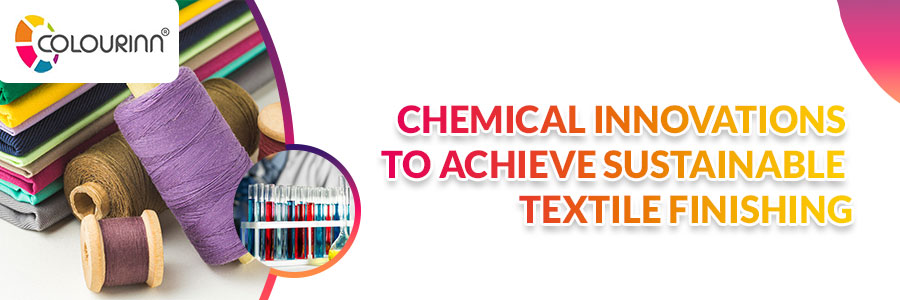The fashion and textile industry, bearing the hallmark of vibrancy and colour, often hides a less glamorous truth: its environmental impact. But with groundbreaking chemical innovations, a new age of sustainable textile finishing is unfolding. Dive into the depths of these advancements and see how companies like Colourinn are shaping a greener future.
The Need for Greener Chemistry
As global textile consumption booms, so does the urgency for eco-friendly practices. Traditional textile finishing processes have been taxing on the environment, often leading to:
- Water pollution: Dye runoff can contaminate water supplies, harming aquatic life and jeopardizing human health.
- Carbon emissions: High energy consumption during textile production amplifies greenhouse gas emissions.
- Waste generation: Many finishing agents, once expended, end up as hard-to-decompose waste.
Chemical Innovations in Sustainable Textile Finishing
Textile finishing, a quintessential process to impart desirable properties to fabrics, has historically depended on environmentally taxing methods. But the landscape is witnessing a transformative shift, championed by cutting-edge chemical innovations.
Bio-based Innovations
- Smart Polymers: Bio-based polymers, hailing from renewable sources, are steering the textile industry away from non-biodegradable options. These sustainable polymers not only reduce environmental harm but also bestow fabrics with enhanced strength, pliability, and finishing.
- Green Auxiliaries: Scientists are delving into bio-based alternatives, like natural enzymes that cut down the dyeing temperatures, thus conserving energy. Another stride in this direction is the use of plant-derived surfactants, replacing traditional, more harmful agents.
Sustainable Dyeing Techniques
- Green Dispersants: Replacing traditional counterparts, green dispersants come with reduced environmental implications, ensuring dyes spread evenly on fabrics while remaining biodegradable.
- Water Conservation: Innovations such as Supercritical CO2 dyeing, which leverages carbon dioxide in a ‘supercritical’ state, are making waterless dyeing a reality. This method not only conserves water but also provides vivid, enduring colours.
Advancements in Finishing
- Enzymatic Solutions: Leveraging enzymes, which are precise biological catalysts, modern textile finishing achieves looks like stone-washing and bio-polishing without resorting to environmentally detrimental chemicals.
- Functional Finishes: Beyond mere aesthetics, the world of textile finishing now ensures functionalities like UV protection and antimicrobial properties, achieved through sustainable mediums like nano emulsions.
Pioneering Pathways for Eco-conscious Finishing
The relentless quest for sustainable textile solutions is unearthing game-changing techniques and methods.
Circular Processes for Sustainability
- Closed-Loop Systems: Embodying the ethos of reuse and recycling’, novel filtration systems ensure water from dyeing processes is purified and reintegrated, dramatically reducing waste. Simultaneously, chemicals are reclaimed and reutilized, minimizing environmental harm.
The Road Ahead
Innovation doesn’t stop. As research continues, expect to see even more groundbreaking solutions on the horizon that will further reduce the environmental footprint of textile finishing, making the industry more harmonious with our planet’s wellbeing.
Nanotechnology in Sustainable Finishing
Nanotechnology is making a big splash in the textile industry, offering precision like never before.
Nanoparticle Dye Carriers: These minute particles can efficiently carry dye molecules, ensuring:
- Uniform distribution: Ensuring even colour without overuse of dyes.
- Improved fastness: Nano-level interactions increase the bond strength between the dye and the fibre.
Nano-coatings for Textiles: Beyond dyeing, nanotechnology offers protective finishes:
- Water repellency: Nano-coatings can make fabrics water-resistant without hampering breathability.
- Antimicrobial finishes: Protect textiles from bacteria, fungi, and odour, extending fabric life.
Colourinn: A Leader in Sustainable Textile Chemistry
At the vanguard of sustainable textile innovations stands Colourinn. With a legacy that harmoniously blends quality with environmental stewardship, Colourinn has emerged as a beacon of sustainable textile chemistry.
- Cutting-Edge Research and Development: Behind Colourinn’s remarkable products is an equally remarkable team of experts. Our in-house molecular research labs continuously work on groundbreaking formulations, ensuring that every product doesn’t just meet but sets industry standards.
- Eco-friendly Product Portfolio: With a keen eye on the future, Colourinn has developed a range of dyes and auxiliaries that are not only superior in performance but also environmentally benign. Our portfolio resonates with a commitment to the planet, as they offer solutions that reduce water usage, energy consumption, and waste generation.
- Holistic Approach to Sustainability: For Colourinn, sustainability isn’t confined to just products. Our corporate responsibility extends to every facet of the operations. From ensuring that the manufacturing processes are energy efficient to adopting packaging solutions that minimise waste, Colourinn’s dedication to a greener planet is palpable.
- Client-centric Innovations: Understanding that every client is unique and so are their needs, Colourinn prides itself on offering customised solutions. By aligning our innovations with client requirements, we not only ensure business success but also promote sustainable practices across the textile value chain.
Conclusion: A Bright, Sustainable Future with Colourinn
Colourinn’s dedication to innovation and sustainability places them at the forefront of the textile finishing industry. Our extensive product range, from bio-based dye dispersants to green textile auxiliaries and advanced enzymatic solutions, showcases a commitment to quality and sustainability.
Moreover, our unique offerings in natural enzyme finishes and plant-based surfactants demonstrate that industry needs and environmental stewardship can indeed coexist. Discover our range of eco-friendly auxiliaries and be part of this green revolution. Get started today!
Frequently Asked Questions
Q1. What are the obstacles for achieving sustainable textile finishing?
Ans. There are some crucial obstacles like, Cutting back on waste, using fewer chemicals and water, and following environmental laws.
Q2. How do chemical advancements contribute to the sustainability of textiles?
Ans. Chemical advancements can result in the creation of environmentally friendly dyes and finishing agents with lower environmental impact.
Q3. What are the examples of innovative sustainable textile finishing?
Ans. Enzyme fabric softening, digital printing for water reduction, and bio-based colors are a few examples of textile finishing.

